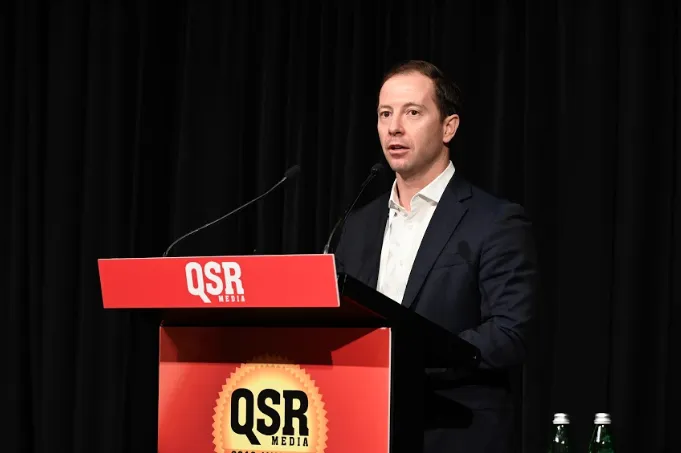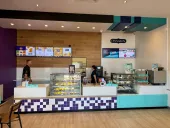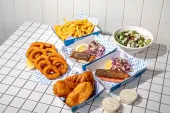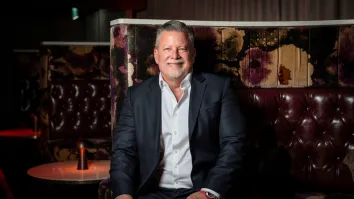
Three lessons from Oporto's brand transformation
CEO Craig Tozer shares how they managed to revitalise the chicken brand.
To maintain relevance, a brand in Australia’s foodservice industry has to continuously adapt to trends and changing consumer behaviors. Over the course of doing business, not everyone will be successful doing so.
This is what Craig Tozer, chief executive officer of Oporto, had walked into when he took the helm over the company in 2015.
“We had like for like sales decline for about ten years, and our franchisee sentiment was at all time lows. That meant that had limited money to reinvest. And the franchisees had really lost belief in management, and leadership,” he told the conference at the QSR Media Sandhurst Fine Foods Conference & Awards 2019.
Before that, the company had already been sold twice and had lost much of the Portuguese identity it started with when Antonio Cerqueira founded it in 1986.
“Fundamentally the heart of the business was broken, and their brand identity and DNA was going,” he said.
To fix it, Oporto underwent a brand transformation that saw new store designs, a new national training program on customer service, and even a renewed menu offering-- all resulting in an engaged franchise network, a happier crew and incremental sales.
Play to your strengths
The first thing Tozer did before initiating the change was to bring Cerqueira back as brand ambassador. With him back to guide the team towards a unified vision, things became much simpler.
“We thought we could win for a number of reasons. Our DNA was differentiated. Antonio was a real person; he’s not made up. Our food’s fresh and to the highest quality, and our chili sauce is famous,” Tozer said.
“We set a big vision, and that was to be the most craved food experience on earth. Notice a big difference here: it wasn't just a domestic vision, it was also an international one.”
Oporto set forth on a rigorous campaign to return the brand to its Portuguese roots. They brought back the more expensive, but more popular original recipe of their chili sauce. They visited Portugal to understand the culture that they were trying to recreate in Australia. They gathered advisors and consultants, and improved their marketing skills to better represent Cerqueira’s vision for the brand: a “blend of passion, vibrancy, Portuguese heritage, and a youthful spirit”.
Walk in your customers’ shoes
The next thing Oporto changed was the company culture towards both its employees and its customers.
“Every person that comes in our restaurant we want(ed) to have a big impact on,” Tozer said.
Before, he said that there was a lack of focus around understanding their customers and their pathway to a purchase and the friction points involved. To gain a better understanding of that, Oporto immersed itself in the experience of its people through interviews and research.
“We just had a simple philosophy that if we want to walk in our customers’ shoes, we better take ours off,” Tozer said.
“It started with the customer. Then it was much broader, because it also included the employees’ experience, our own experience, the suppliers’ experience, and our franchisees’ experience. The multiplication of each of these would create a network effect and give compound benefits to our system. Because at the end of the day, we're running a franchise system. Just growing supplies or getting discounts is not the way to build a long term relationship.”
In the process, Oporto began reevaluating its values to better reflect something akin to the hospitality industry, where atmosphere, personality, and service principles take priority over speed and efficiency.
The brand launched a massive initiative to retrain thousands of its employees, develop a new engagement strategy with its younger consumers, and give its stores a design makeover. The changes included a renewed focus on food presentation, personality, easy ordering, atmosphere; modernized store designs, that highlighted the elements that differentiated the Oporto brand; and even upgraded packaging, that enabled more avenues to communicate with the customer.
“Most importantly, we allowed our people to live the brand,” Tozer said. “Don't underestimate the empowerment of culture. We have an amazing multicultural society here in Australia. If you operate across the country like we do, the empowerment of that and bringing people together is significant.”
“You must walk in your customers shoes. We must engage the key elements of our ecosystem and leverage those well and you just cannot possibly do this on your own. It needs a team inside and outside to do it well,” he added.
Take quick wins when you can
According to Tozer, since undertaking its transformation, Oporto’s sales have gone up around 40%, with like for like sales in the most recent quarter seeing an increase of 12%. The brand also continues to grow its network, with more stores opening across the country as well as abroad. Franchisee profitability, meanwhile, is at all time highs.
However, the process has not always been smooth. In fact, they were met with opposition from the get-go.
“People are going to hate your transformation. People hate change, you just gonna have to accept it and be very focused on delivering what your vision is. Only break the rules that you understand,” Tozer suggested.
“Quick wins count a lot, because it creates credibility. So we had done that.”
Now, Oporto is setting its sights on exploring how technology like machine learning and artificial intelligence might be able to improve its business, and to expand its reach abroad. Currently, the brand already operates in Singapore, Sri Lanka, and Vietnam, with more stores planned to open in the Middle East over the next few years.
In striving to fulfill his vision for the brand, Cerqueira spoke on the significance of looking ahead, “You cannot make money today and forget to do that tomorrow. I'm always happy to make money today slowly, but I would always like to do it tomorrow as well.”


























